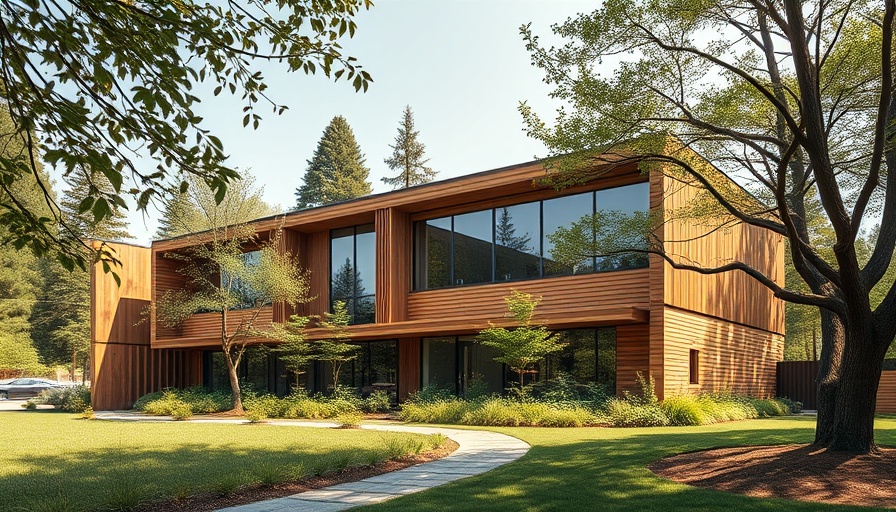
Creating Your Perfect Remote Workspace: Inspiration from House for Ela
In the rapidly evolving world of remote work, creating a comfortable, efficient workspace is paramount. The House for Ela, designed by architect Ewa Kaszuba, serves as an inspiring example of how thoughtful architecture can influence our work environments. Nestled in a tranquil Polish spa town, this villa highlights the importance of maximizing space, ensuring privacy, and integrating natural elements—core aspects conducive to productivity.
Design Principles: Merging Comfort with Functionality
The House for Ela brilliantly balances functional design with aesthetic appeal. Spanning a V-shaped plan, the two intersecting volumes create both openness and privacy—key features for any remote worker seeking an environment that fosters creativity without distractions. The living spaces, located in one wing, offer a direct connection to nature, with large windows that invite ample natural light, essential for maintaining energy levels throughout the day.
Emphasizing Natural Elements: The Power of Green Spaces
Natural elements play a crucial role in the design of House for Ela. Its wooden facade, featuring larch constructions, not only provides warmth and personality but also connects the house to its serene surroundings. The courtyard concept allows for micro outdoor spaces, promoting relaxation during breaks—a vital component for mental well-being amongst digital nomads. Integrating plants within and around your workspace can enhance air quality while providing a calming visual, encouraging positive mental states.
Privacy Considerations: Securing Your Work Environment
One of Kaszuba’s primary goals for House for Ela was to create a sanctuary for its inhabitants. The design carefully prioritizes privacy by utilizing the street-facing elevation with rough plaster, creating a solid exterior while ensuring that interior spaces remain open and everything is viewed from the courtyard. For remote workers, having a workspace that feels isolated from the distractions of the external world encourages focused productivity—an element that can be implemented in your home office by strategically positioning room dividers or using soundproofing techniques.
Sustainable Practices: Fueling Productivity Through Eco-Friendly Design
House for Ela also exemplifies eco-friendly practices, embedding features like a geothermal heat pump and solar panels within its design. This commitment to sustainability can have a direct impact on our well-being as well—working in a space that prioritizes environmental considerations can increase satisfaction and induce a sense of purpose. For those setting up a home office, consider incorporating energy-saving devices or materials that reflect an eco-conscious mindset to cultivate a productive atmosphere.
Flexibility and Space Management: A Key for Adaptability
The fluidity of House for Ela’s layout allows for varied usage of space, accommodating both solitary work sessions and collaborative gatherings. Thoughtful design promotes spontaneous interactions and intentional solitude. Digital nomads often thrive in environments that are versatile; creating multifunctional spaces in your home by using collapsible furniture or designated areas for different tasks can help increase efficiency while also catering to your unique work habits.
How Emotion Influences Workspace Efficiency
The emotional aspect of workspace design cannot be understated. The warm materials and considered layout of House for Ela create a cozy atmosphere, making individuals feel at ease. Feeling comfortable in your environment can hugely influence productivity and creativity. Use color psychology and personal touches in your workspace to build an area that sparks joy and boosts motivational levels.
By taking cues from the remarkable design of Ewa Kaszuba's House for Ela, digital nomads can create their own ideal remote workspaces that not only serve practical purposes but also enrich overall well-being and productivity. With the right mindset and design choices, your workspace can become a sanctuary for innovation and growth.
 Add Row
Add Row  Add
Add 




Write A Comment